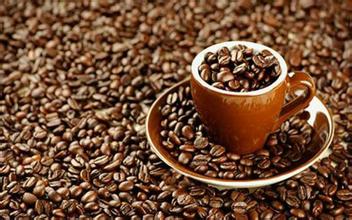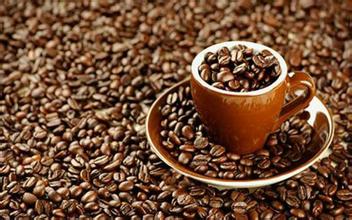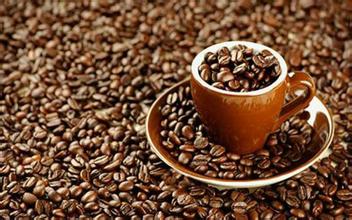The practice of cappuccino _ the practice of domestic cappuccino
Cappuccino
(an Italian coffee)
At the beginning of the 20th century, when the Italian Azibucha invented the steam pressure coffee machine, he also developed cappuccino coffee.
Cappuccino is an Italian coffee mixed with the same amount of Italian espresso and steamed milk. The color of the coffee is like a cappuccino monk covering a dark brown coat with a headscarf, hence the name caffeine. The traditional cappuccino is 1/3 espresso, 1/3 steamed milk and 1/3 foamed milk, and sprinkled with small particles of cinnamon powder.
Cappuccino coffee tastes good, but its name origin is more knowledgeable, and it has always been the best material for the study of character changes in Europe and the United States. The history of the word Cappuccino is enough to show that a word is often extended to other meanings because it looks like something, far beyond the original intention of the creator. It sounds complicated. The monks of the St. Franciscan Church (Capuchin), founded after 1525, all wore brown robes and pointed hats. When the St. Franciscan Church spread to Italy, the locals thought that the monks' clothes were very special, so they gave them the name Cappuccino. The Italian word refers to the loose robes and small pointed hats worn by monks, derived from the Italian word "headscarf" or Cappuccino.
However, the old man loved coffee and found that when espresso, milk and foam were mixed, the color was like the dark brown robe worn by monks, so he came up with a drink with coffee and sharp bubbles, which was named Cappuccino. The word was first used in English in 1948, when a report in San Francisco first introduced cappuccino beverages. It was not until 1990 that it became a familiar coffee drink. It should be possible to say that the word Cappuccino coffee comes from the St. Franciscan Church (Capuchin) and the Italian headscarf (Cappucio). It is believed that the original word makers of Cappuccino never dreamed that the monks' robes would eventually become the name of a coffee drink.
Cappuccino coffee is a variation of Italian coffee, that is, strong coffee is poured with steamed milk, and the color of the coffee is like the headscarf on the dark brown coat of cappuccino monks, hence the name caffeine.
Cappuccino is also related to the name of a monkey. There is a small monkey in Africa with a black cone-shaped hair on its head, much like a pointed hat on a Franciscan robe, hence the name Capuchin, which was first used by the British in 1785.
The word Capuchin has evolved into coffee drink names and monkey names hundreds of years later, which has always been an interesting story for literati.
Caffeine content
Editing
Average caffeine content: small cup (240cc): 75 mg medium cup (360cc): 75 mg large cup (480cc): 150mg usually a cup of espresso is 10 ml, caffeine ratio: 75 mg. In addition, you can also choose low caffeine (the removal of 98% or more is considered true low caffeine). The average low caffeine content is: small cup: 3 mg, medium cup: 3 mg, large cup: 6 mg.
classification
Editing
Cappuccinos are divided into dry and wet ones. The so-called dry cappuccino (Dry Cappuccino) refers to the conditioning method with more milk bubbles and less milk. it tastes stronger than milk and is suitable for people with heavy taste. As for wet cappuccino (Wet Cappuccino), it refers to the practice of fewer milk bubbles and more milk. The smell of milk overshadows the thick smell of coffee, which is suitable for those with light taste. The flavor of the wet cappuccino is similar to that of the popular latte. Generally speaking, the taste of cappuccino is heavier than that of latte. If you have a heavy taste, you might as well order cappuccino or dry cappuccino. If you are not used to the heavy smell of coffee, you can order latte or wet cappuccino.

Important Notice :
前街咖啡 FrontStreet Coffee has moved to new addredd:
FrontStreet Coffee Address: 315,Donghua East Road,GuangZhou
Tel:020 38364473
- Prev

Relationship between Arabica coffee bean family members hematemesis and sorting out Arabica coffee bean family relationship
Coffee beans come from two main types of coffee trees: Robusta and Arabica. Drinks with high caffeine will come from Robusta, Coffea canephora robusta variety and Elaraby plus coffee beans (Coffea arabica) are commonly used by general coffee bean manufacturers, and the taste of the two coffee beans will be different with different proportions.
- Next

Characteristics of Arabica coffee beans the difference between Arabica coffee beans and other coffee beans
What is the difference between Arabica coffee beans and other coffee beans? I have a great interest in coffee (excluding instant coffee). Through my own attempt and Zhihu's study, I know that the taste is related to the degree of roasting, and the most important one is also related to beans. Over the past year, I have been trying to drink hanging-ear coffee and found that it is common: Mantenin, Yega Chefe, Guatemala, Kenya and so on. Went there last month.
Related
- Does Rose Summer choose Blue, Green or Red? Detailed explanation of Rose Summer Coffee plots and Classification in Panamanian Jade Manor
- What is the difference between the origin, producing area, processing plant, cooperative and manor of coffee beans?
- How fine does the espresso powder fit? how to grind the espresso?
- Sca coffee roasting degree color card coffee roasting degree 8 roasting color values what do you mean?
- The practice of lattes: how to make lattes at home
- Introduction to Indonesian Fine Coffee beans-- Java Coffee producing area of Indonesian Arabica Coffee
- How much will the flavor of light and medium roasted rose summer be expressed? What baking level is rose summer suitable for?
- Introduction to the characteristics of washing, sun-drying or wet-planing coffee commonly used in Mantenin, Indonesia
- Price characteristics of Arabica Coffee Bean Starbucks introduction to Manning Coffee Bean Taste producing area Variety Manor
- What is the authentic Yega flavor? What are the flavor characteristics of the really excellent Yejasuffi coffee beans?

